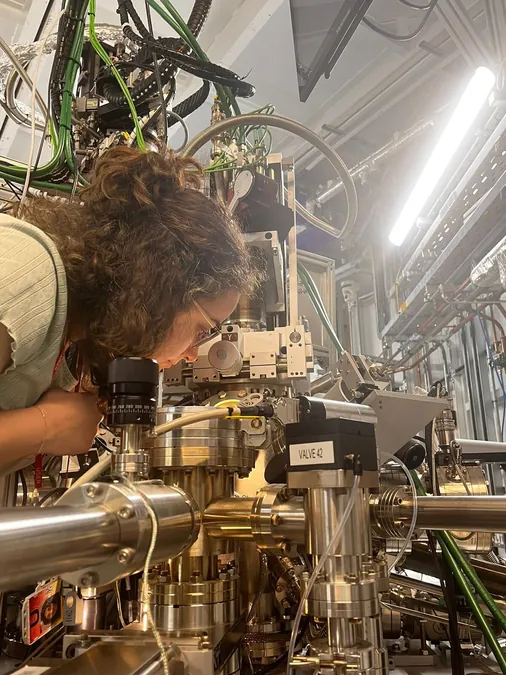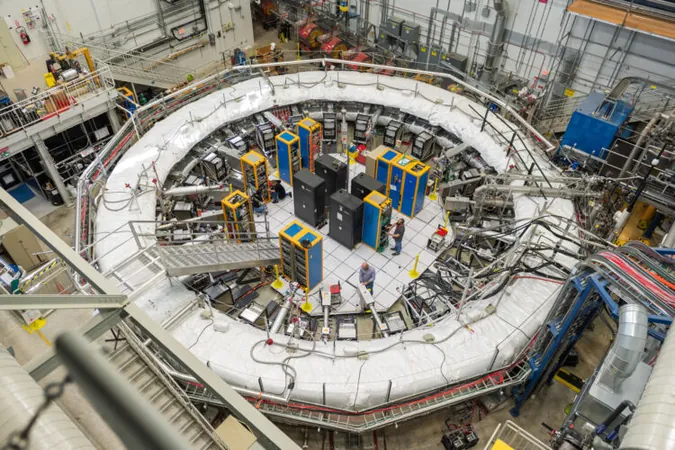
Revolutionary 2D Materials with a Twist: Uncovering Surprising Electronic Properties
2024-12-30
Author: Wei
Introduction
In a groundbreaking study, scientists are delving into the realm of 2D materials—ultra-thin sheets just one atom thick—that may hold the key to more efficient electronic devices. Among these materials, researchers are particularly intrigued by the phenomenon of 'twisting' sheets together, which can unexpectedly enhance their electronic properties, including the potential for superconductivity.
Research Collaboration
Led by materials scientist Antonija Grubišić-Čabo from the University of Groningen, the research team collaborated with experts from Poland, Germany, France, and Italy to explore the unique characteristics of a 2D material known as tungsten disulfide. Their findings were recently published in the prestigious journal *Physical Review Materials*.
Anticipated Findings
According to existing theories, stacking two sheets of tungsten disulfide at a precise angle of 4.4 degrees was expected to induce a collective behavior among electrons, which could lead to exciting new effects. Giovanna Feraco, the first author of the study, stated, 'When closely aligned, the sheets can exhibit remarkable collective behavior that opens the door to innovative electronic applications.'
Unexpected Results
However, the experimental results revealed a surprising twist—literally. Instead of displaying the anticipated collective behavior, the study found that interactions between the atoms in the bilayer led the material to 'relax' into larger, untwisted regions. Feraco explained this phenomenon by stating that the twisted bilayer partially reverts to a lower-energy, untwisted configuration, disrupting the expected electron dynamics.
Implications and Future Directions
This unexpected finding underscores the complexity and variability present in 2D materials, demonstrating the necessity for an in-depth understanding of how dissimilar regions within a twisted bilayer can affect overall electronic properties. Moving forward, this study not only provides insights into the behavior of 2D structures but also paves the way for tailored applications in next-generation electronics.
Conclusion
Research into 2D materials holds enormous promise for various technological advancements, from faster and more efficient computing chips to revolutionary applications in quantum computing and energy storage. As scientists continue to uncover the hidden potentials of these materials, the future of electronic innovation looks brighter than ever.



 Brasil (PT)
Brasil (PT)
 Canada (EN)
Canada (EN)
 Chile (ES)
Chile (ES)
 Česko (CS)
Česko (CS)
 대한민국 (KO)
대한민국 (KO)
 España (ES)
España (ES)
 France (FR)
France (FR)
 Hong Kong (EN)
Hong Kong (EN)
 Italia (IT)
Italia (IT)
 日本 (JA)
日本 (JA)
 Magyarország (HU)
Magyarország (HU)
 Norge (NO)
Norge (NO)
 Polska (PL)
Polska (PL)
 Schweiz (DE)
Schweiz (DE)
 Singapore (EN)
Singapore (EN)
 Sverige (SV)
Sverige (SV)
 Suomi (FI)
Suomi (FI)
 Türkiye (TR)
Türkiye (TR)
 الإمارات العربية المتحدة (AR)
الإمارات العربية المتحدة (AR)